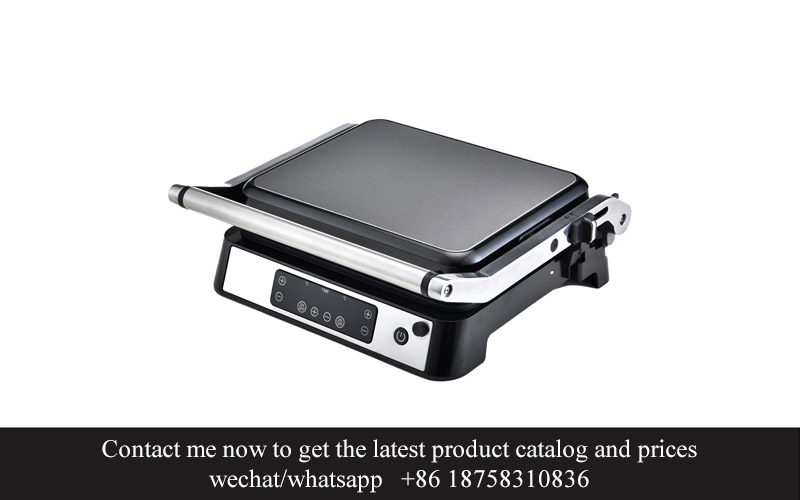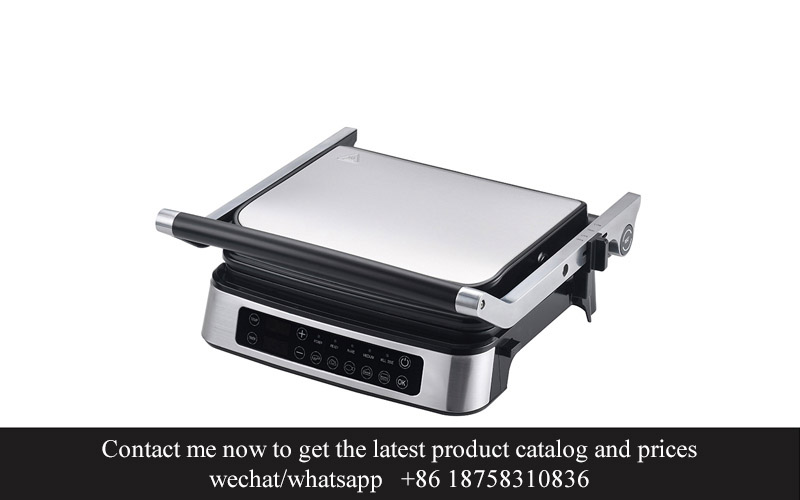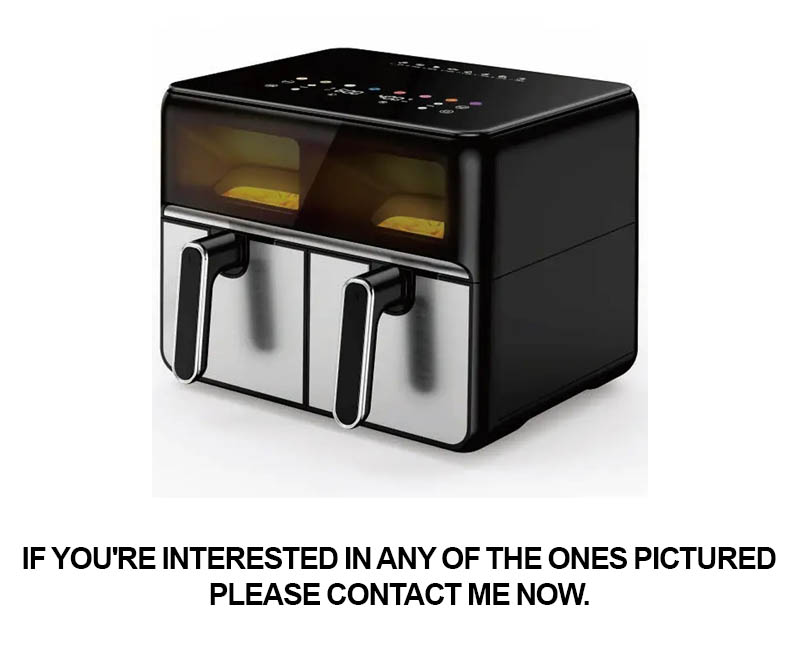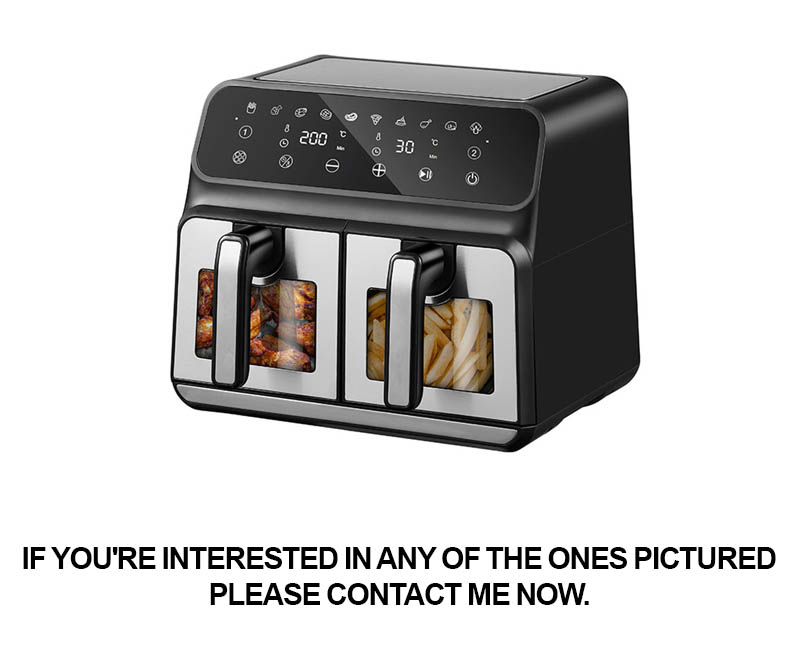Address
304 North Cardinal
St. Dorchester Center, MA 02124
Work Hours
Monday to Friday: 7AM - 7PM
Weekend: 10AM - 5PM
Address
304 North Cardinal
St. Dorchester Center, MA 02124
Work Hours
Monday to Friday: 7AM - 7PM
Weekend: 10AM - 5PM

In the ever-evolving landscape of kitchen appliances, innovation and adaptability are key to standing out in a crowded market. As consumers seek convenience and efficiency, the appliance industry must keep pace with their changing needs and preferences. This article delves into the dynamic world of kitchen appliances, exploring the latest trends, the impact of key players like Walmart, and the stories of those brands that have made a name for themselves as approved suppliers. It’s a journey through the past, present, and future of kitchen tech, highlighting the strategies and insights that can lead to success in this competitive field.
The kitchen, once a realm of functional appliances, has transformed into a hub of innovation and style. The rise of technology has sparked a wave of creativity in kitchen appliance design, making everyday cooking tasks more efficient and enjoyable. From smart ovens that can tailor cooking times to individual recipes to compact appliances that save space, the kitchen appliance market is experiencing a renaissance.
Smart appliances have become the new norm, offering connectivity and convenience that was once only a dream. Smart refrigerators now include digital screens and apps that allow users to manage their groceries, track food expiration dates, and even order more supplies with a few taps on their smartphones. These advancements not only streamline the shopping experience but also help reduce food waste, a growing concern among consumers.
The focus on sustainability has also driven innovation in the kitchen appliance sector. Energy-efficient models are becoming more popular as consumers become more environmentally conscious. These appliances not only help save money on energy bills but also contribute to a smaller carbon footprint. Manufacturers are incorporating eco-friendly materials and designing appliances that are easier to recycle at the end of their life.
Design has also taken a front seat in the kitchen appliance market. Modern kitchens are no longer just about functionality; they are about aesthetics. Sleek, minimalist designs are in vogue, and appliance brands are responding with stylish, integrated units that complement the latest kitchen trends. The days of bulky, unsightly appliances are fading as sleek, integrated dishwashers, ovens, and microwaves become the new standard.
Compact and multi-functional appliances have emerged as a response to the growing need for space-saving solutions. Urban living, smaller homes, and open-concept kitchen layouts have all contributed to the demand for appliances that do more with less space. Countertop blenders, compact toasters, and mini fridges are just a few examples of how innovation can turn a small kitchen into a fully functional cooking space.
Health and wellness have become significant drivers in the kitchen appliance industry as well. Appliance brands are focusing on creating tools that can help consumers make healthier choices. For instance, air fryers have gained popularity for their ability to cook food with less oil, offering a healthier alternative to traditional frying methods. Similarly, slow cookers and pressure cookers are becoming must-have appliances for their ability to create tender, nutritious dishes with minimal effort.
The integration of cooking and baking appliances is also on the rise. Smart ovens, for example, can now connect to mobile apps to provide recipes, cooking times, and even suggest meal plans. This seamless integration between appliances and technology not only simplifies cooking but also encourages users to experiment with new recipes and cooking techniques.
Customization has also become a key factor in the rise of innovation in kitchen appliances. Many manufacturers are offering modular designs that allow users to mix and match different components to create their perfect kitchen setup. From custom color options to modular cooking surfaces, the industry is catering to the diverse tastes and needs of consumers.
The rise of e-commerce has also played a crucial role in the innovation of kitchen appliances. Online marketplaces have given appliance brands direct access to consumers, allowing them to gather valuable feedback and respond quickly to emerging trends. This direct interaction has helped to accelerate the pace of innovation as companies strive to stay competitive in a rapidly changing market.
In conclusion, the kitchen appliance industry is thriving in its quest to provide consumers with innovative solutions that make cooking easier, healthier, and more enjoyable. From smart appliances and energy-efficient models to sleek designs and multi-functional units, the market is evolving at a pace that reflects the changing needs and desires of today’s consumers.

Walmart’s stamp of approval is a beacon for emerging brands in the kitchen appliance industry. It’s not just a label—it’s a seal of quality and consumer trust that can transform a small, innovative company into a recognized name. Here’s how this milestone can make a significant difference for these brands.
Elevated Brand Reputation: Gaining Walmart’s approval instantly elevates the brand’s reputation. The retail giant’s rigorous selection process ensures that only the most reliable and high-quality products make the cut. This association with a brand like Walmart can be a game-changer, as it speaks volumes about the brand’s commitment to excellence.
Increased Visibility: Being a Walmart-approved supplier means the brand’s products are showcased in one of the world’s largest retail networks. This exposure can lead to a surge in sales and recognition. Customers who trust Walmart to provide quality items are more likely to give these new appliance brands a chance.
Streamlined Distribution: Walmart’s extensive distribution network offers emerging brands a shortcut to a vast customer base. By partnering with Walmart, these companies can bypass the complexities of setting up their own distribution channels, ensuring their products reach shelves quickly and efficiently.
Enhanced Consumer Trust: Walmart has built a reputation for quality and customer satisfaction. For emerging brands, this approval is a powerful trust signal. Consumers are more likely to purchase a product from a brand that is backed by such a well-respected retailer, reducing the perceived risk of trying something new.
Market Access: Walmart’s approval opens doors to markets that might otherwise be inaccessible. The brand gains entry into not just physical stores but also Walmart’s online platform, reaching a diverse audience across different demographics and locations.
Strategic Partnerships: Approval by Walmart often leads to strategic partnerships that can further boost the brand’s growth. These partnerships may include co-branded marketing campaigns, joint promotions, or even the opportunity to develop exclusive product lines for Walmart customers.
International Expansion: For brands looking to expand internationally, Walmart’s approval can be a stepping stone. The retailer’s global presence can help these brands enter new markets with a local credibility that is hard to achieve organically.
Economic Opportunities: Being a Walmart-approved supplier can provide economic stability and growth opportunities for emerging brands. The financial backing and resources that come with such an arrangement can help these companies invest in research, development, and marketing.
Feedback and Improvement: Walmart’s approval process includes a thorough evaluation of the brand’s business practices and product quality. This means that the brand is committed to continuous improvement. The feedback received from Walmart can be invaluable in refining products and processes.
Long-term Growth Potential: With Walmart’s backing, emerging brands have a clearer path to long-term growth. The partnership can lead to sustainable success, as the retailer’s commitment to quality aligns with the brand’s values, fostering a strong, lasting relationship.
In essence, Walmart’s approval is not just a recognition of a brand’s current status; it’s a strategic investment in its future. For emerging brands in the kitchen appliance sector, this milestone represents a significant opportunity to scale their operations, expand their reach, and build a solid foundation for future success.

In the ever-evolving landscape of kitchen appliances, navigating the European and American markets requires a nuanced understanding of cultural nuances, consumer preferences, and regulatory differences. Europe, with its rich culinary heritage, presents a market that values design, sustainability, and energy efficiency. The United States, on the other hand, is a melting pot of diverse tastes and lifestyles, with a strong emphasis on convenience and innovation.
European markets, particularly in countries like Germany, Italy, and the UK, are known for their sophisticated design aesthetics. Consumers here seek appliances that not only perform well but also complement their kitchen decor. Brands must prioritize sleek lines, elegant finishes, and a sense of premium quality. Additionally, European consumers are increasingly conscious of environmental impact, leading to a growing demand for energy-efficient and sustainable products.
In the U.S., the landscape is quite different. American consumers are more likely to prioritize functionality and ease of use. The market is vast and diverse, with everything from urban apartments to sprawling suburban homes. This diversity means that kitchen appliances must cater to a wide range of needs and budgets. Smart technology has also become a significant factor, with consumers seeking appliances that can be integrated into their smart homes and controlled remotely.
In Europe, the regulatory environment is stringent, with regulations like the ErP (Energy-related Products) Directive dictating energy efficiency standards. Compliance with these regulations is not only a legal requirement but also a mark of quality that European consumers look for. In the U.S., while regulations are less strict in comparison, there is still a strong focus on safety and energy efficiency, particularly in states with stringent building codes.
The distribution channels in both regions also play a crucial role. In Europe, brick-and-mortar retailers such as MediaMarkt, Currys, and John Lewis are dominant. Online sales are growing, but the in-store experience remains a significant part of the consumer journey. In the U.S., online retail giants like Amazon and Walmart have revolutionized the appliance market, offering a vast selection and competitive pricing.
For brands looking to enter these markets, localization is key. Adapting product features and marketing strategies to align with local preferences is essential. For example, European consumers might appreciate a range of cooking modes and settings that cater to traditional recipes, while American consumers may prefer appliances that offer quick and easy cooking options.
Moreover, the European and American markets have different buying behaviors. European consumers tend to be more brand loyal, while American consumers are more price-sensitive and value-driven. Brands must understand these differences to tailor their offerings accordingly.
In Europe, the kitchen appliance market is highly segmented, with distinct categories like small domestic appliances, large domestic appliances, and professional appliances. Each segment has its own set of trends and consumer demands. For instance, the small domestic appliance market in Europe is witnessing a surge in personal care appliances, while the large domestic appliance market is focused on high-performance and energy-saving models.
In the U.S., the market is less segmented, but there are still clear trends. Smart appliances are becoming increasingly popular, with consumers looking for features like Wi-Fi connectivity, voice control, and predictive maintenance. The U.S. also has a robust market for specialty appliances, such as sous-vide cookers and air fryers, which cater to niche cooking preferences.
To succeed in both the European and American markets, brands must invest in thorough market research, understand the local competitive landscape, and develop a robust go-to-market strategy. This includes building strong relationships with local distributors, retailers, and service providers, as well as creating compelling marketing campaigns that resonate with the target audience.
In conclusion, navigating the European and American markets requires a deep dive into the unique characteristics of each region. By understanding cultural nuances, regulatory requirements, consumer preferences, and distribution channels, brands can position themselves for success in these dynamic and rewarding markets.

In the ever-evolving landscape of kitchen appliances, brands are pushing the boundaries with ideas that defy convention. Here’s a look at some unconventional product ideas that are not just shaking up the market but also changing the game:
Smart Herb Growers: Who said kitchen appliances had to be limited to cooking? Enter smart herb growers, compact devices that not only save space but also provide fresh herbs at your fingertips. These innovative gadgets use LED lighting and automated watering systems to cultivate your favorite herbs, making them perfect for urban gardeners or busy cooks who want a constant supply of fragrant basil or peppery cilantro.
The Rotating Toaster: Say goodbye to the days of burnt toast and unevenly toasted bread. The rotating toaster takes the concept of even cooking to a new level. As the bread slices rotate, they receive consistent heat distribution, ensuring a perfect golden-brown finish every time. It’s a simple yet genius twist on the classic toaster that’s catching the attention of bread lovers everywhere.
The Modular Kitchen Appliance: Imagine a kitchen where each appliance is designed to be customized and upgraded. Modular kitchen appliances are the future of flexibility. Users can start with a base unit and add modules as needed, whether it’s a sous-vide attachment, a built-in spice grinder, or a digital thermometer. This approach allows for a kitchen that grows with the user’s needs and preferences.
The Interactive Food Saver: Food waste is a significant concern for consumers and the environment. Enter the interactive food saver, a device that not only extends the shelf life of fresh produce but also educates users on the best ways to store and preserve food. With a built-in display and a companion app, this appliance provides real-time tips and tricks for keeping your fridge organized and your food fresh.
The Smart Kitchen Scale with Recipe Integration: Cooking is an art, but it’s also a science. The smart kitchen scale takes the guesswork out of measurements by integrating with recipe apps. As you weigh your ingredients, the scale automatically adjusts the recipe to the exact amount you’ve added, ensuring you never over or under-season your dish. It’s a simple innovation that can elevate even the most novice chef’s skills.
The Under-Cabinet Coffee Maker: For those who love their morning cup of Joe but don’t want the clutter of a traditional coffee machine, the under-cabinet coffee maker is a game-changer. Designed to fit snugly under your kitchen cabinets, this sleek appliance can brew a fresh pot of coffee without taking up valuable countertop space. It’s a subtle nod to the modern kitchen’s need for efficiency and style.
The Zero-Gravity Blender: Blending is about to get a whole new meaning with the zero-gravity blender. This innovative appliance uses a unique design that eliminates the need for blades, instead relying on powerful suction to blend ingredients. Not only does this make cleanup a breeze, but it also allows for a smoother, more consistent texture in your blends. It’s a blend of technology and simplicity that’s sure to be a hit with health-conscious consumers.
The Modular Cooktop: The modular cooktop takes customization to a new level, allowing users to choose the size and type of burners they need. Whether you’re a fan of induction, gas, or electric, this cooktop can be tailored to your cooking preferences. It’s a versatile appliance that can adapt to any kitchen layout and cooking style.
The Interactive Kitchen Timer: Time is a critical factor in cooking, and the interactive kitchen timer is here to help. This smart timer not only counts down but also syncs with your recipe app to provide step-by-step guidance. It can even alert you when it’s time to switch ingredients or adjust the heat, making it an invaluable tool for anyone who wants to cook like a pro.
The Eco-Friendly Dishwasher with Custom Cycles: Dishwashers are a staple in modern kitchens, but not all are created equal. The eco-friendly dishwasher offers customizable cycles that cater to different types of dishes and soil levels. With a focus on water and energy efficiency, this appliance is not only convenient but also environmentally responsible.
These unconventional product ideas are reshaping the kitchen appliance industry by focusing on user experience, sustainability, and innovation. They’re proof that the only limit to what kitchen appliances can do is the imagination of those who design them.

In the ever-evolving landscape of the kitchen appliance industry, staying ahead requires a keen eye for emerging trends and a robust foundation of data-driven insights. Here’s a look into how some brands are doing just that.
Brands that embrace innovation often find themselves at the forefront of consumer preferences. By analyzing the latest market research, they identify gaps in the current offerings and develop products that cater to unmet needs. For instance, the rise of smart appliances has been a game-changer, with consumers craving convenience and connectivity in their kitchen gadgets.
The integration of technology into kitchen appliances has opened new avenues for creativity. From voice-controlled ovens to app-linked refrigerators, the possibilities are vast. Companies that can successfully bridge the gap between technology and functionality are the ones that stand out. They understand that the future isn’t just about making appliances that work; it’s about making them intuitive and responsive to the user’s lifestyle.
Data analytics plays a crucial role in predicting future trends. By examining purchasing patterns, customer reviews, and social media sentiment, brands can gain valuable insights into what their target audience desires. This information is then used to refine product designs, improve user experience, and even personalize recommendations.
One key trend that has been on the rise is sustainability. Consumers are increasingly conscious of the environmental impact of their purchases. Brands that prioritize eco-friendly materials and energy-efficient designs are not only appealing to a growing market segment but are also contributing to a greener future. This shift towards sustainability has spurred the development of appliances like solar-powered kitchen gadgets and biodegradable packaging.
Another trend that’s reshaping the industry is the focus on health and wellness. With a growing number of people adopting healthier lifestyles, there’s a demand for kitchen appliances that support these goals. We’re seeing a surge in products that offer features like nutrient extraction, air-frying capabilities, and even built-in food processors that can handle everything from chopping to juicing.
Customization is also becoming a significant factor in the appliance market. Consumers no longer want one-size-fits-all solutions; they want appliances that can be tailored to their specific needs. This has led to the creation of modular kitchen systems where users can mix and match components to suit their cooking style and kitchen layout.
The role of influencers and social media in shaping consumer preferences cannot be overstated. Brands that leverage these platforms to showcase their products are often the ones that capture the attention of the younger demographic. They use storytelling and engaging content to create a connection with their audience, making the product not just a tool but a part of their lifestyle.
In the realm of data-driven insights, machine learning and artificial intelligence are playing a pivotal role. By analyzing vast amounts of data, these technologies can predict future trends with surprising accuracy. This allows brands to anticipate market shifts and stay one step ahead of the competition.
Moreover, the importance of user feedback cannot be underestimated. Brands that actively seek out and incorporate customer suggestions are more likely to develop products that resonate with their target market. This feedback loop ensures that the products evolve alongside the changing needs and expectations of consumers.
In conclusion, staying ahead in the kitchen appliance industry is all about staying informed and adaptable. By embracing innovation, leveraging data analytics, and understanding the pulse of the consumer, brands can create products that not only meet but exceed expectations. It’s a dynamic landscape, but for those willing to invest in the right strategies, the rewards can be substantial.

In the ever-evolving landscape of consumer electronics, Walmart has established itself as not just a retail giant but a pivotal platform for small appliance suppliers looking to make their mark. As a launchpad for these suppliers, Walmart offers a unique blend of market reach, consumer trust, and strategic partnerships that can significantly impact a brand’s trajectory.
Walmart’s extensive network spans across the United States and beyond, providing a vast consumer base that is accessible to small appliance suppliers. This extensive reach means that even niche products can find a niche market within Walmart’s walls. The retail giant’s physical stores, online marketplace, and the Walmart Plus membership program create multiple touchpoints where suppliers can showcase their products.
Consumer trust is another crucial aspect of Walmart’s role as a launchpad. The Walmart brand is synonymous with reliability and quality, which can lend credibility to smaller suppliers. When a product is associated with Walmart, it’s often perceived as having undergone a certain level of vetting and quality control. This association can be a game-changer for emerging brands, as it can quickly boost their reputation and sales.
Strategic partnerships with other brands and manufacturers further enhance Walmart’s value as a launchpad. These collaborations can lead to co-branded products, exclusive deals, and even joint marketing initiatives. Suppliers that partner with Walmart gain access to a broader array of resources and expertise, which can help them innovate, scale, and navigate the complexities of the retail market.
One of the key benefits of being a Walmart supplier is the access to advanced data analytics. Walmart’s vast trove of consumer data allows suppliers to gain insights into buying patterns, preferences, and seasonal trends. This data-driven approach enables suppliers to tailor their product offerings and marketing strategies to meet the ever-changing demands of consumers. For small appliance suppliers, this can mean the difference between a successful product launch and one that falls flat.
Walmart’s focus on sustainability and corporate social responsibility also plays a significant role in shaping its role as a launchpad. Suppliers that align with Walmart’s sustainability goals and initiatives can leverage this association to differentiate their products in the market. Consumers are increasingly looking for eco-friendly and socially conscious products, and having Walmart’s endorsement can be a powerful selling point.
The retail giant also offers robust support for small appliance suppliers through its training programs and workshops. These resources help suppliers understand the nuances of the retail industry, from product development to supply chain management. By equipping suppliers with the knowledge and tools they need to succeed, Walmart ensures that the brands it supports are well-prepared to handle the challenges of the market.
Moreover, Walmart’s commitment to innovation is evident in its constant search for new and unique products. This open-mindedness provides an opportunity for small appliance suppliers to introduce groundbreaking ideas that might not have found a market otherwise. Whether it’s smart appliances that integrate with home automation systems or eco-friendly kitchen gadgets, Walmart’s platform can help these innovations reach a wider audience.
In the realm of marketing and promotion, Walmart provides a stage for small appliance suppliers to showcase their products. From in-store demonstrations to targeted online advertising, Walmart’s marketing muscle can propel a brand into the spotlight. This exposure is invaluable for suppliers looking to establish a strong brand presence and build customer loyalty.
The relationship between Walmart and small appliance suppliers is a symbiotic one. While Walmart gains access to a diverse range of products that cater to different consumer needs, suppliers benefit from the retail giant’s infrastructure and brand recognition. This dynamic creates a fertile environment for innovation, growth, and success.
In conclusion, Walmart’s role as a launchpad for small appliance suppliers is multifaceted. It provides a vast consumer base, leverages consumer trust, fosters strategic partnerships, offers data-driven insights, supports sustainability initiatives, provides training and resources, encourages innovation, and amplifies marketing efforts. For small appliance suppliers looking to scale their operations and make a lasting impact, Walmart’s platform is a powerful ally in the competitive world of consumer electronics.

In the competitive landscape of the kitchen appliance industry, a small appliance supplier emerged as a beacon of innovation and success after gaining approval from the retail giant, Walmart. This case study delves into the journey of this supplier, highlighting the strategies and triumphs that led to their recognition and growth.
Our supplier, let’s call them “Gadget Innovators,” started as a niche player, focusing on unique and eco-friendly kitchen gadgets. Their breakthrough came with the introduction of a solar-powered food dehydrator, a product that not only aligned with the growing interest in sustainable living but also offered a sleek, modern design that appealed to tech-savvy consumers.
The Walmart approval was a turning point for Gadget Innovators. With access to the retailer’s vast distribution network, their product gained immediate exposure to a broader audience. The collaboration with Walmart was not just about shelves and shelf space; it was about leveraging the brand’s reputation for quality and reliability.
Walmart’s stringent quality standards were a challenge for Gadget Innovators but also an opportunity to refine their production processes. The team at Gadget Innovators worked tirelessly to ensure that every product met or exceeded the retailer’s expectations. This focus on quality was pivotal in building trust with Walmart and, subsequently, with Walmart’s customers.
To cater to the diverse needs of the American market, Gadget Innovators conducted extensive market research. They studied consumer buying habits, preferences, and the competitive landscape. This research led to the development of a range of products, from countertop induction cooktops to compact dishwashers, all designed with the modern kitchen in mind.
The European market, with its distinct cultural nuances and regulations, presented a different set of challenges. Gadget Innovators adapted their product lines to comply with European safety standards and embraced the continent’s love for compact living spaces. The introduction of space-saving kitchen gadgets, like foldable countertop ovens and compact toasters, was a hit among European consumers.
The success of Gadget Innovators can also be attributed to their commitment to staying ahead of industry trends. They invested in a dedicated team of product designers and engineers who were constantly brainstorming and prototyping new ideas. This forward-thinking approach allowed them to be one step ahead of the competition, with products that were not just innovative but also user-friendly.
Data-driven insights played a crucial role in Gadget Innovators’ strategy. They leveraged advanced analytics to understand market trends, customer preferences, and sales patterns. This data allowed them to make informed decisions about product development, marketing campaigns, and inventory management.
Collaborating with Walmart also opened doors for Gadget Innovators to other major retailers and distributors. The brand’s association with the retail giant enhanced its credibility and made it easier to secure partnerships elsewhere. This expansion was not just limited to physical stores but also to online platforms, where Walmart’s e-commerce presence was significant.
In the realm of customer service, Gadget Innovators went above and beyond. They offered comprehensive support, from product installation to troubleshooting, ensuring that customers had a seamless experience. This commitment to customer satisfaction was reflected in their high return rates and positive reviews.
As Gadget Innovators grew, so did their product portfolio. They expanded into smart kitchen appliances, integrating technology to make cooking and meal preparation more efficient. Their smart cookware, which could connect to smartphones and offer personalized recipes, became a hit among tech enthusiasts and busy professionals alike.
The story of Gadget Innovators is one of adaptability, innovation, and strategic partnerships. By aligning with Walmart, they not only gained access to a powerful distribution channel but also learned invaluable lessons about quality control, market research, and customer service. Today, Gadget Innovators stands as a testament to the fact that with the right approach, even small appliance suppliers can carve out a significant niche in the global market.

In the ever-evolving landscape of kitchen appliances, the future promises a blend of technological advancements, sustainability, and convenience. Smart kitchens are not just a trend but a reality shaping the way we interact with our cooking spaces. Here’s a glimpse into what’s next in store for kitchen appliances.
Appliances that Learn and AdaptImagine a fridge that knows when you’re low on milk and automatically orders more online. Or a stove that adjusts its heat based on the type of dish you’re preparing. The future kitchen will be equipped with appliances that learn from your habits and adapt to your needs, making cooking a more personalized experience.
Energy Efficiency and SustainabilityWith climate change at the forefront of global concerns, the future of kitchen appliances will focus heavily on energy efficiency and sustainability. Expect to see a surge in appliances that are not only energy-saving but also made from recycled materials. Innovations like solar-powered countertop ovens and induction cooktops that minimize energy loss are just the beginning.
Voice-Controlled and Smart IntegrationThe rise of voice assistants like Amazon’s Alexa and Google Assistant is reshaping the kitchen landscape. The future will see a seamless integration of voice control in appliances, allowing users to manage their kitchen devices with simple commands. From turning on the coffee maker to adjusting the oven temperature, voice control will make kitchen tasks more intuitive and hands-free.
Personalized Cooking and NutritionAs health and wellness become more important, kitchen appliances will likely offer personalized cooking options. Imagine a blender that not only blends your smoothie but also analyzes its nutritional content and suggests improvements. Smart ovens could offer recipes tailored to your dietary preferences and restrictions, ensuring that every meal is both delicious and healthful.
Augmented Reality in CookingAugmented reality (AR) could revolutionize the way we cook. With AR, users can overlay digital recipes, ingredient lists, and cooking instructions directly onto their kitchen environment. This could help beginners navigate complex recipes and provide interactive cooking guides that make cooking an engaging and educational experience.
Eco-Friendly and Modular DesignDesign trends in kitchen appliances will increasingly focus on eco-friendliness and modularity. Appliances may come in modular pieces that can be mixed and matched to suit different kitchen layouts. This not only allows for customization but also makes it easier to replace individual components as needed, reducing waste.
Interactive Food Storage and PrepSmart storage solutions will become more common, with appliances that can track the freshness of your food and suggest recipes based on what you have on hand. Interactive cutting boards and food processors that guide you through the preparation process could become standard features in modern kitchens.
Integration with Home AutomationThe kitchen of the future will be deeply integrated with home automation systems. Appliances will communicate with each other and with the home’s overall smart system, creating a cohesive and efficient living environment. This could mean automatic ordering of groceries when supplies are low or the ability to control kitchen appliances remotely, whether you’re at work or on vacation.
In conclusion, the future of kitchen appliances is poised to blend cutting-edge technology with a focus on sustainability and convenience. From smart, adaptive appliances to eco-friendly designs and interactive cooking tools, the kitchen is set to become a hub of innovation and efficiency.

In the ever-evolving landscape of the kitchen appliance industry, becoming a Walmart-approved supplier is akin to securing a golden ticket. It’s a testament to a brand’s commitment to quality, innovation, and market fit. The journey to this esteemed status is marked by rigorous standards, strategic partnerships, and a keen understanding of consumer needs. Here’s a glimpse into the path that leads to becoming a Walmart-approved small appliance supplier.
Understanding Walmart’s StandardsWalmart’s reputation for excellence is well-earned, and their approval process is no exception. Brands must demonstrate a deep understanding of Walmart’s stringent quality control measures, safety protocols, and supply chain requirements. This means ensuring that every product meets or exceeds the highest industry standards, from manufacturing to packaging.
Building a Robust Supply ChainA reliable supply chain is the backbone of any successful business, especially when aiming to supply a retail giant like Walmart. This involves establishing partnerships with reliable manufacturers, maintaining inventory levels, and ensuring timely delivery. It’s about creating a seamless flow of products that can meet the demands of a vast customer base without compromising on quality.
Innovation in Design and FunctionalityWalmart-approved suppliers often stand out due to their innovative approach to design and functionality. They understand that the kitchen of today is not just a place for cooking but a hub for entertainment and convenience. This means creating appliances that not only perform well but also offer unique features that enhance the user experience. Think smart ovens that can be controlled via smartphone apps or refrigerators that can track your groceries and suggest recipes.
Adapting to Market TrendsThe kitchen appliance market is dynamic, with trends shifting rapidly. A Walmart-approved supplier must stay ahead of the curve by continuously analyzing market trends and consumer preferences. This involves researching what’s hot in the market, what’s not, and what’s about to become the next big thing. It’s about being agile and ready to pivot when necessary.
Investing in Marketing and BrandingOnce a brand earns Walmart’s approval, the next step is to effectively market the products. This means crafting a compelling brand story that resonates with consumers. It’s about leveraging Walmart’s extensive marketing resources while also building a strong online presence. Social media, influencer partnerships, and targeted advertising campaigns are all part of the strategy to get the word out.
Customer Feedback and Continuous ImprovementCustomer satisfaction is paramount in the kitchen appliance industry. A Walmart-approved supplier must be committed to collecting and analyzing customer feedback to continuously improve their products. This involves creating easy-to-use interfaces, providing exceptional customer service, and being responsive to any issues that arise. It’s about building a reputation for reliability and trustworthiness.
Navigating Regulatory ComplianceThe kitchen appliance industry is heavily regulated, and compliance is non-negotiable. A Walmart-approved supplier must have a thorough understanding of all relevant regulations, including safety standards, energy efficiency, and labeling requirements. This means staying up-to-date with changes in legislation and ensuring that every product is compliant from the outset.
Leveraging Walmart’s Distribution NetworkOne of the most significant advantages of being a Walmart-approved supplier is access to their vast distribution network. This means that products can reach a wide audience quickly and efficiently. It’s about understanding how to leverage this network to maximize sales and brand visibility. This could involve special promotions, featured placements in stores, or strategic inventory management.
Building Long-Term RelationshipsThe relationship with Walmart is not just a transactional one; it’s about building a long-term partnership. This involves regular communication, transparency, and a willingness to collaborate on new initiatives. It’s about being a reliable and strategic partner who can contribute to Walmart’s overall success.
In conclusion, the path to becoming a Walmart-approved small appliance supplier is a multifaceted journey that requires a combination of quality products, a robust supply chain, innovative design, market adaptability, effective marketing, customer focus, regulatory compliance, and strategic partnerships. It’s a testament to a brand’s dedication to excellence and its readiness to meet the challenges of the modern kitchen appliance market.